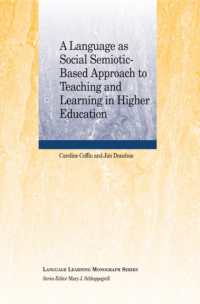Full Description
Linguistic synesthesias combine different senses, as in English smooth melody (touch→sound). For nearly a century, researchers have gathered data that has been interpreted as supporting the notion of a hierarchical ordering of the senses. According to this proposal, expressions map the presumed-to-be 'lower' senses of touch, taste, and smell onto the presumed-to-be 'higher' senses of sound and sight. Here, this proposal is tested in the first-ever meta-analysis of linguistic synesthesias, combining thirty-eight datasets from fourteen different languages. The authors demonstrate that clear patterns emerge from the data, but many such patterns are inconsistent with the notion of a linear hierarchical order or a simple lower/higher divide of the senses. This calls for a shift in what theories are considered to be viable for explaining asymmetries between the senses in linguistic synesthesia.
Contents
1. Introduction; 2. Why a meta-analysis of linguistic synesthesia is needed; 3. The hierarchy of the senses: evidence and theory; 4. Methods; 5. Analysis #1: Hierarchy congruency; 6. Analysis #2: source/target ratios; 7. Analysis #3: pairwise asymmetry; 8. Analysis #4: specific mappings; 9. Discussion; 10. Conclusion and outlook for future research on linguistic synesthesia; References.








